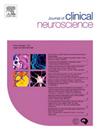Evaluation of post-craniotomy headache management: A single-center retrospective study
IF 1.9
4区 医学
Q3 CLINICAL NEUROLOGY
引用次数: 0
Abstract
Background
Post-craniotomy headache (PCH) pain is common among patients undergoing craniotomy and is associated with increased perioperative morbidity and mortality. It is often undertreated due to the various flaws in the agents used for PCH. The aim of this study was to describe the efficacy of current pain management practices for patients undergoing elective craniotomy.
Methods
This was a single center, retrospective study in adults undergoing elective craniotomy for neoplasm and epilepsy who had a post-operative length of stay of 48 h or greater. The primary objective of this study was to describe the efficacy of current pain management practices. Secondary objectives were to evaluate the relationship between pain control and hospital length of stay (LOS), to identify factors associated with uncontrolled pain, and to assess where in the post-operative course uncontrolled pain occurred.
Results
One hundred patients were included in the study, with 75 patients undergoing craniotomy for neoplasm excision and 25 for epilepsy procedures. Median pain scores were significantly higher on postoperative day (POD) 0 compared to POD 1 through 3 (P = 0.043), however there was no significant difference in maximum pain scores among post-operative days (P = 0.629). No correlation existed between LOS and maximum pain score (R = 0.065, P = 0.520). Thirty-three patients (33 %) experienced uncontrolled pain, most frequently occurring on POD 0 and 1. Female sex (P = 0.011), prior history of migraines (P = 0.014), younger age (P < 0.001), and craniotomy for epilepsy procedures (P < 0.001) were associated with uncontrolled pain.
Conclusion
PCH pain was well-controlled with current pain management practices, with the highest frequency of uncontrolled pain occurring on POD 0 and 1. Optimization of PCH pain management in patients with identified risk factors is warranted, and future studies evaluating PCH pain in larger, multicenter studies are needed.
Previous presentations
Great Lakes Pharmacy Conference, West Lafayette, Indiana – 4/29/2022 – preliminary results presented as a poster presentation.
求助全文
约1分钟内获得全文
求助全文
来源期刊

Journal of Clinical Neuroscience
医学-临床神经学
CiteScore
4.50
自引率
0.00%
发文量
402
审稿时长
40 days
期刊介绍:
This International journal, Journal of Clinical Neuroscience, publishes articles on clinical neurosurgery and neurology and the related neurosciences such as neuro-pathology, neuro-radiology, neuro-ophthalmology and neuro-physiology.
The journal has a broad International perspective, and emphasises the advances occurring in Asia, the Pacific Rim region, Europe and North America. The Journal acts as a focus for publication of major clinical and laboratory research, as well as publishing solicited manuscripts on specific subjects from experts, case reports and other information of interest to clinicians working in the clinical neurosciences.
 求助内容:
求助内容: 应助结果提醒方式:
应助结果提醒方式:


